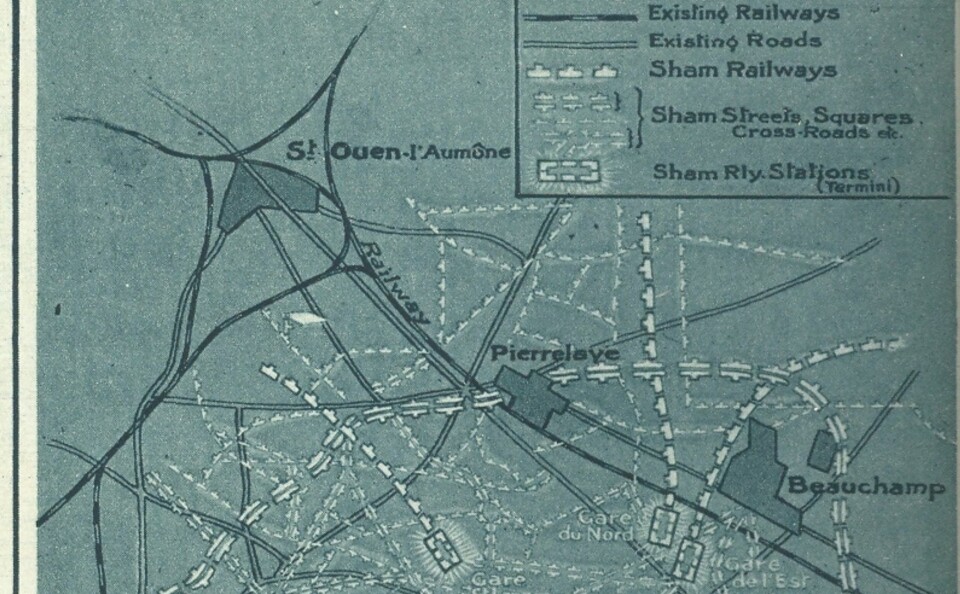-
Faudra Tif Hair: Understand the punny names behind French hair salons
Can you guess the slang meaning of the word tif?
-
Did you know? France invented the strawberry
As strawberry season gets underway, you might be surprised to hear that garden strawberries originated in France and can be used in many ways
-
Know your cheeses and their seasons: which to eat in France in February
Cow’s milk cheeses dominate as winter comes to an end
Did you know? A decoy Paris was planned in WW1 to trick German bombers
The elaborate plan was to use lights to recreate famous landmarks a safe distance from the capital and lure away German aircraft

France almost had its very own ‘Fake Paris’, according to a project from the French aviation services highlighted in a British newspaper in 1920.
It was destined to delude German air forces by creating a fake version of both the city centre and also the Saint-Denis district.
Landmarks to be recreated outside Paris
The plan included ‘sham streets’ and ‘sham railways’, intended to create a illuminated illusion of Paris in an attempt to deviate bombers away from the capital.
It was eventually aborted after German troops started retreat operations at the beginning of 1918.
Read more: Rediscovered WW1 tunnel in France ‘still smells of gunpowder’
Two areas in northern Paris were chosen to recreate some of the capital’s most iconic areas such as the Etoile roundabout, the Garnier Opera, various train stations and the factories of Aubervilliers.
The little known historical fact came to light after JF Ptak Science Book, a British blogspot, dug out a 1920-edition of The Illustrated London News that mentioned the plan.
It was later reported by several French newspapers.
“A false Paris outside Paris: A ‘City’ created to be bombed,” said the newspaper headline, alongside pictures of the plans.
Read more: €180million facelift for WW1 bombarded French basilica
Did not want to be bombed like London
The ‘Défense contre aéronefs’ (Defence against aircrafts) service and the Secretary of State for French aeronautics were heavily influenced by the aircraft attacks in London on June 13, 1917 and Paris on January 30 and 31, 1918 and looked for a way to avoid further bombings.
German aviation launched nightly attacks to fly undetected since it was not equipped with radars.
So, the French came up with the idea of using lights to give the false impression of Paris’s location.
Crossing the Seine was an important part of the trick
‘Fake Paris’ was to be located near Saint-Germain-en-Laye’s forest (Yvelines), while Fake Saint-Denis – the closest district in northern Paris – was to be positioned at Roissy airport while various other factories in eastern Paris would inhabit Chelles (Seine-et-Marne), near the current location of Disneyland Paris.
The area between Maisons-Laffitte (Yvelines), Conflans-Sainte-Honorine (Yvelines) and Herblay (Val-d’Oise) was chosen for Paris since the crossing of the Seine river played an important part in the trick.
The fake Saint-Denis comprised a square area between Tremblay (Seine-Saint-Denis), Villepinte (Seine-Saint-Denis), Louvres (Val-d’Oise) and Fontenay-en-Parisis (Val-d’Oise).
The ingenious plan was never put to the test
The plan was conceived by Fernand Jacopozzi, one of France’s best electricians at the time, and the man who eventually electrified the Champs Elysées and the Eiffel Tower.
Mr Jacopozzi created wooden shafts a few kilometres long with a lighting system that was designed to progressively illuminate so that it gave the impression of a train in movement.
However, the elaborate installations were only finished after the last German aircraft intervention in Paris in September 1918, when Germany was starting to lose ground in France and retreated. Therefore, they were never used.
The Illustrated London News and l’Illustration, another French newspaper that was published between 1843 and 1944 and who ran a similar story in 1930, both expressed doubts about the expected success of the plan.
Historians, however, later found out that Germany had had a similar idea.
Related articles
Le Bleuet de France - origins of the French cornflower tradition
Did you know? First WW1 Tomb of the Unknown Soldier has French origins
France votes to rehabilitate memory of soldiers shot in World War One
























